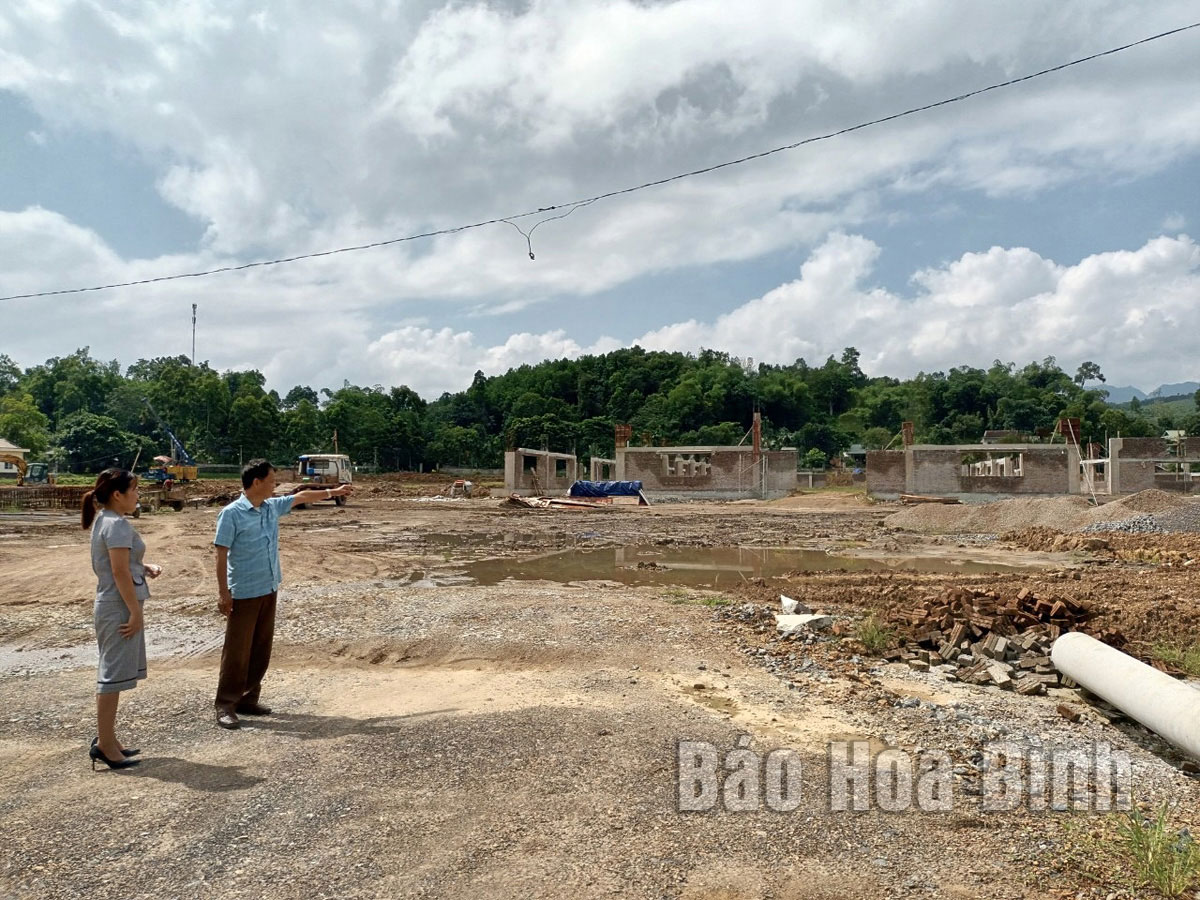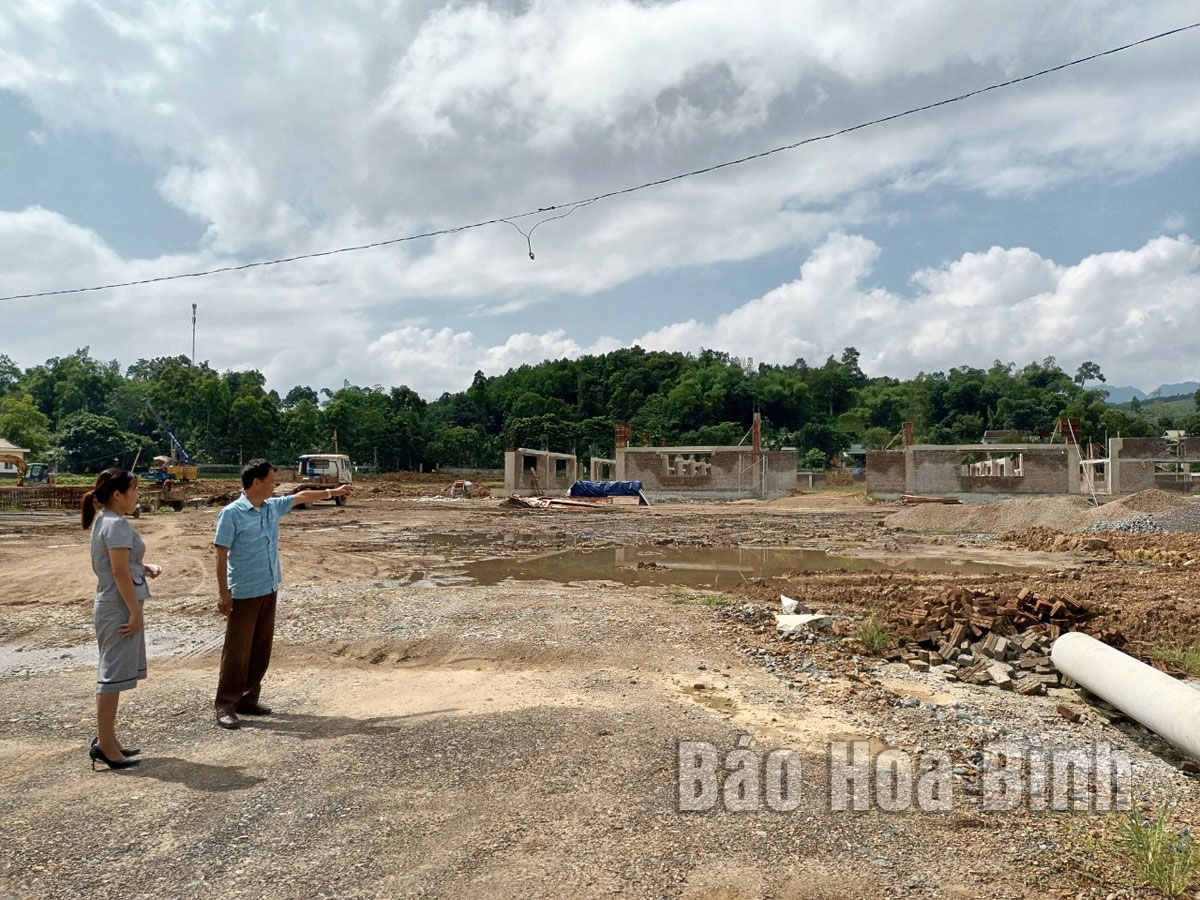
(HBO) – Urbanisation is a motivation for the socio-economic development and the improvement of the living conditions for locals, according to Nguyen Ngoc Diep, Secretary of the Party Committee of Lac Son district.
Thuong Coc commune attracts investment in industrial development, contributing to developing rural areas in association with the formation of Khang Vat residential area.
As a locality with the lowest urbanisation rate, Lac Son's only urban area is Vu Ban township. After being merged, the township has a population of over 9,500, with the urbanisation rate of 8,65%.
The district has made a development planning for Muong Vo township which covers the whole area of Nhan Nghia commune with about 1,400 hectares. At the same time, Lac Son has a number of rural areas that can be developed into urban areas such as Cho Oc in Thuong Coc commune, Cho Re in An Nghia commune, Nga Ba Xua in Xuat Hoa commune, Lam Hoa area in Vu Binh commune, and Cho Chieng in Tan Lap commune.
The district has faced many difficulties in urban development, including a large population and poor transport infrastructure system.
Amid the situation, the district Party Committee has issued a resolution on urban development, which sets a target of 15% in urbanisation rate in 2025 and 25% in 2030.
At the same time, the locality will apply comprehensive measures to boost socio-economic development, transform the economic, labour and employment structure towards increasing the rate of industry, service and reducing that of agriculture.
It will make a plan to urbanise Vu Ban, Muong Vo and Muong Khoi townships, while developing a new-style rural development planning in association with the formation of rural residential areas.
Alongside, the district will work to develop urban and rural infrastructure system, and mobilise resources to complete the power, water supply, park and entertainment system in urban areas.
The urbanisation will be implemented in parallel with the preservation of cultural values of the Muong ethnic minority people./.
Hoa Binh province is undergoing a dynamic transformation amid Vietnam’s national digital transition. Building on Poliburo’s Resolution No. 57-NQ/TW on breakthroughs in science, technology, innovation, and national digital transformation, the province has rolled out a wide range of practical action plans. A standout initiative is the "Digital Literacy for All” movement, an effort to ensure that no one is left behind in the digital era.
Hoa Binh province is undergoing a dynamic transformation in the wake of the national digital transformation movement. Building on Resolution No. 57-NQ/TW of the Politburo on breakthroughs in science, technology, innovation, and national digital transformation, the province has implemented a wide range of practical action plans. A standout initiative is the "Digital Literacy for All” movement ambitious effort to ensure that no one is left behind in the digital age.
With a spirit of unity and proactive problem-solving, the Party Committee, the government and the people of Dong Lai Commune (Tan Lac District) have made great strides in implementing the resolutions of the 24th Party Congress of the commune for the 2020 - 2025 term. Focusing on leadership and practical actions, the commune has brought the Party’s resolutions into daily life, creating strong impacts and pushing the local development forward.
Amid the nationwide push for digital transformation, young people in Hoa Binh Province are stepping up as dynamic pioneers, applying technology to enhance Youth Union operations and expand the reach of youth-led initiatives. Through creativity and adaptability, Youth Union organizations at all levels have introduced a series of practical solutions, contributing to modern governance and community development.
In recent years, An Nghia commune, located in Lac Son district, has stepped up administrative reform, focusing on improving the quality and efficiency of its single-window service unit for receiving and processing administrative procedures. These improvements have helped create favourable conditions for local residents and organisations to handle administrative procedures, contributing to the commune’s broader socio-economic development.
The Prime Minister-approved master plan to develop the multi-use value of forests ecosystems through 2030, with a vision to 2050, aims to improve the management and sustainable use of forest resources, create jobs, increase incomes, and improve the living standards of ethnic minorities, people in mountainous and remote areas, forest workers and those living near forests.



